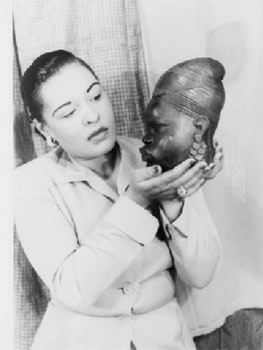Links between 20th-century visual art and jazz under examination at the CCCB
From July 22 to October 18, 2009, at the Centre de Cultura Contemporània de Barcelona. CCCB
Curator: Daniel Soutif
Organized by: Centre de Cultura Contemporània de Barcelona, Museo di Arte Moderna di Trento e Rovereto and Musée du Quai Branly
Born in the United States at the dawn of the 20th century, jazz emerged as a hybrid music style characterized by improvisation.
CENTRE DE CULTURA CONTEMPORÀNIA DE BARCELONA. CCCB
C/ Montalegre, 5
Barcelona (España)

It was forged among groups of black slaves brought over from Africa, who applied the rhythms and sounds of their native land to hymns of work and play in their everyday lives. Now, led by the critic and philosopher Daniel Soutif, the CCCB chronologically examines this genres links to visual arts over the course of the past century through examples in a variety of media: photography, painting, film, animation, graphic design, etc.
Jazz first appeared around 1917 in the New Orleans area and was initially shrouded in prejudice, given that the people who developed and inspired its earliest expressions were considered to be on the lowest rung of American society. It did not become fashionable until 1922, thanks to Tales of the Jazz Age by Scott Fitzgerald. Suddenly, jazz became the soundtrack of an entire generation of young people, and artists like Man Ray glorified it in their work. A snapshot by this surrealist entitled Jazz, from 1919, is on display at the CCCB alongside meticulous illustrations that decorated sheet music and works by artists of that era who were born or resided in the USA, such as Blanding Sloan and Miguel Covarrubias.
White America recognized the existence of African-American culture thanks to jazz, which until 1936 fuelled a widespread cultural movement known as the Harlem Renaissance. Music (with its golden boys, Louis Armstrong and Duke Ellington) was not the only creative facet of this trend, as writers and artists such as Langston Hughes, Aaron Douglas, Winold Reiss and Carl van Vechten adopted jazz as one of their favorite themes.

Winold Reiss
Interpretación de Harlem Jazz, 1925
The syncopated rhythms of this music took Europe by storm after World War I, and the explosive appearance of the Revue Négre with Josephine Baker in 1925 inspired a true passion for African-American music on the Old Continent. This fascination, which Paul Colin called tumulte noir, left its mark on the work of Van Dongen, Picasso and Grosz, among others. The jazz era was followed in the 1930s by the advent of swing music, which could be heard in numerous musical comedies after the introduction of sound film. The music of the black and white big bands of the day would also influence the contemporary work of Hart Benton, Kupka and the then young designer Alex Steinweiss.
World War II did not stop the spread of jazz into non-musical fields. Boogie-woogie is regarded as having exerted a decisive influence on Mondrians work, and Henri Matisse actually christened one of his colored-paper collages with the name Jazz. Pollock often listened to bebop and David Stone, Warhol and Josef Albers designed the covers for some of the styles most famous albums. By way of example, Pollocks White Light was featured on the cover of the legendary album Free Jazz, released by Ornette Coleman in 1960.
Since the 1980s, jazz and black music have continued to pervade numerous works by artists such as Colescott, Basquiat, Lorna Simpson, Jeff Wall and Christian Marclay. The metaphorical culmination of this exhibition, which has already been shown in Trent and Paris, is a small train made by David Hammons which chugs through a mining landscape scattered with grand piano lids.





